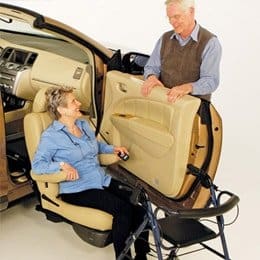Mobility aids may improve outcomes following critical care for illness or injury, as they may provide the level of therapeutic support and rehabilitative stability that makes mobility feasible. Getting up is vital to recovery; mobility aids may help particularly when it comes to aging in place.
There is nothing that ages and debilitates like an injury or illness, and for seniors or individuals with pre-existing health issues or disabilities, it can be catastrophic. After leaving a critical care or skilled nursing setting, a rehabilitative program is integral to recovery and a favorable long-term prognosis. For support and stability during this journey, mobility aids may fit the bill and provide needed assistance during this vulnerable time. Furthermore, a quick recovery and positive outcome preserve autonomy and independence, both key elements of aging in place for seniors.
Physiotherapy
If you are discharged from critical care or a skilled nursing setting, you will be provided with a discharge plan that likely will include some form of physiotherapy. This will often occur at home with home health aides or therapists that make the rounds for their patients recovering from an illness or hospitalization. You may be commanded to appointments with physical and occupational therapists, which can be challenging if you are suffering from mobility issues or limitations after your stay. If your stay was prolonged, you may have atrophy in muscles that have not been used regularly. An effective rehabilitation plan is integral to return as closely as possible to a former level of mobility and function, restoring muscle mass, which makes physiotherapy invaluable. Remember that the longer one is hospitalized, the longer it will take to recover. Make the most of the options that are offered and consider physiotherapy, with the aid of mobility devices or equipment, when you go home.
Autonomy
Maintaining mobility is an important part of preserving autonomy as we age. Sure, there are solutions, assistants, and tools that can aid in getting around, but protecting one’s independence fiercely includes proactive measures to protect from health having possible impacts on aging in place. From dressing independently to driving around to do errands, there are tools and aids that will make these tasks a bit easier and less of a chore, which may hasten and expedite your recovery following a critical care issue or health problem. Get up and around quicker with a little bit of help.
Rehabilitation
Mobility directly relates to prognosis and recovery when it comes to a serious health issue, a critical care episode, injury, or illness. It can hinder or hasten rehabilitation progress; this further reinforces the validity and value of mobility aids during this period of recovery. From heading to a doctor appointment to independent physical therapy, a simple mobility aid or tool may offer the right amount of support and confidence needed to achieve what needs to be done. Mobility is concerned a key component and critical piece of post-hospitalization care for all patients, but most especially seniors.
Outcomes
Sadly, hospitalizations can have negative effects on an individual’s level of mobility, particularly when they are dealing with other health issues and concerns. When you are immobile, there is a decline in function that may- or may not- be restored later. Some of the contributing health episodes include falls, dementia, or infection. The longer a patient goes without moving around and completing ADLs (activities of daily living), the harder it will be to recover and restore to the previous level of functioning.
National Critical Illness Awareness Month
National Critical Illness Awareness Month in October is the perfect time to garner and glean information related to your own mobility, health, and recovery. Make a point to learn more about critical illness prevention, treatment, and patient care- all which may help if you find yourself recuperating from a critical care incident or illness. It is estimated that nearly one-and-a-half million people in this country experience a heart attack or stroke annually; find out more about preventing and recovering from critical illness or injury during this vitally important observance.
It makes the most sense to reach out and work with mobility vendor in your region, but make sure that it is a reputable and recognizable one. There are significant reasons why you should not invest in second-hand or private-sale equipment; work with a local mobility retailer that has established a reputation in the California community with online feedback and customer reviews.
Ready to learn more about mobility aids? Recovering from an illness or injury? Recuperate quicker and preserve your freedom; call the mobility experts today and find out what options exist to make your life easier, and your home environment more accessible. Don’t let mobility issues or health episodes cause obstacles to your autonomy and aging in place. Call today to learn more.
President, Husband, Father, Grandfather Graduate of UC Davis- Bio Sci Major- Go Aggies! Jeff has extensive experience in all of Pacific Mobility’s products and services, and specializes in accessibility products as well as stairlifts, ceiling lifts and custom wheel chairs. His hobbies include spending time with family, gardening, mountain biking, exercising and off road motorcycle riding.
24 years as Owner/President of Pacific Mobility Center – selling, installing, and servicing stairlifts, porch lifts, ceiling lifts, pool lifts, handicap ramping, specialty wheelchairs, scooters, power wheel chairs, and other power mobility devices
Certified Environmental Access Consultant since 2008
Licensed General Contractor since 1998
Certified Aging in Place Specialist since 2016
Board Member for Home Access Professionals
Member of Association of Members of the Accessibility Equipment Industry (AEMA)




